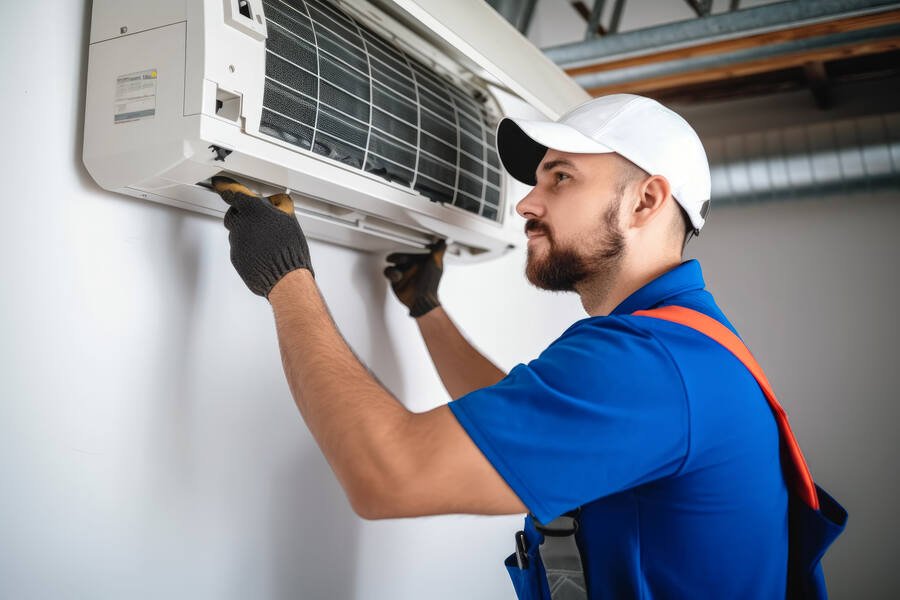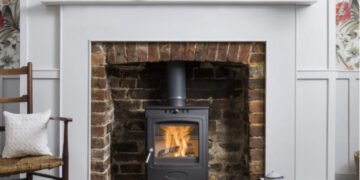Year-round home climate control ensures the occupants enjoy thermal comfort in all seasons. The summer heat can be overwhelming, making it necessary to use air conditioning systems to improve airflow and keep the interiors cooler. And for the unbearable winter cold, you may need efficient heating systems to raise your home’s temperature. The same applies to autumn and spring, all with varying temperatures.
Heating, cooling, humidifying, and dehumidifying your home aren’t without challenges. These processes require mechanical systems that are prone to breakdowns and efficiency issues. But fret not — this guide offers practical tips to keep your home comfortable all year round.
Understand the basics of climate control
Home climate control systems are designed to manage temperature and air quality for optimum comfort. Knowing how they work enables you to use them more effectively and respond accordingly when they malfunction.
First and foremost, understand the need to maintain a consistent indoor temperature. With a stable heat level, the heating and cooling system doesn’t have to work extremely hard. This leads to considerable energy savings.
Also, understand your HVAC system’s functionality in and out. Read the manual from start to finish, ensuring you can operate every element. Apart from promoting better use, it also lets you know when to contact air and heating repair experts.
Summer strategies
In summer, set your AC to a comfortable temperature. There’s always the temptation to set it too cold due to the sweltering heat. That’ll consume a lot of energy, which only means one thing—higher bills! Moreover, staying in a freezing room isn’t ideal. According to the U.S. Department of Energy, it’s best to set the AC to about 78 degrees Fahrenheit or 25 degrees Celsius during summer months.
Besides regulating the temperature, improving air circulation is crucial, too. You can do this by installing ceiling fans or placing portable ones at strategic spots around the room. Also, open the windows at dawn and dusk before it gets too hot to allow the outside cool air to get in.
Furthermore, don’t forget to insulate your home against heat. Simple installations like shades or curtains can help block the sun’s heat. You’d also want to seal gaps around windows and doors to increase the efficiency of the cooling system.
Winter tips
In winter, set your thermostat to about 60 to 68 degrees Fahrenheit, which is the ideal temperature for sleep. Higher temperatures could cause restlessness and discomfort because the heat interferes with the body’s thermoregulation. The same applies to daytime. You want the interiors to be warm enough without wasting energy unnecessarily. This temperature setting is also less stressful for the heating system, upholding its durability.
Insulation is also critical in winter. The aim is keeping the warm air inside, preventing it from leaking to the outside. Inspect your home thoroughly to identify spots through which heat can escape. Notorious culprits include the area around doors and windows, as well as the attic. Adequately insulate these areas to reduce the heating needs for your home.
Spring and autumn suggestions
Spring and autumn are characterized by moderate temperatures, unlike the extremes of summer and winter. Thus, the heating and cooling needs are significantly reduced. If the temperatures are favorable, consider giving your HVAC system a break. Open windows during the day to let in the fresh air. You’ll save a lot on energy bills by doing such.
Furthermore, take this time to prepare your home for the oncoming extreme seasons. Summer comes right after spring and winter after autumn. So, spend the more lenient months inspecting your HVAC system and carrying out necessary repairs. Last-minute preparations aren’t usually advisable because you can mess up the system if you attempt repairs while in a rush.
Year-round maintenance
It’s critical to regularly inspect your climate control systems and repair problematic elements as soon as they break down or show signs of malfunctioning. Routine maintenance is also vital. It helps keep all components in excellent working condition.
Here are some maintenance tasks you’d want to carry out regularly:
- Clean air filters, preferably every month, and replace them when their lifespan elapses, usually about three to 12 months.
- Clean all ducts and vents.
- Refill the refrigerant often.
- Test the thermostat to ensure it effectively controls temperature.
- Regularly call in professionals for comprehensive tune-ups.
Moreover, note that technology evolves dynamically. Keep updated with the latest trends in home climate control and upgrade your system if need be. Modern devices, though initially more costly, are typically more energy-efficient, reducing your electricity bills.
Conclusion
Comfort at home is something all yearn for, and climate control plays a significant role in this area. To help you achieve it, this article has highlighted key strategies to maintain a cozy atmosphere in your home throughout the year.
Utilizing smart technology can significantly improve how you manage your heating and cooling devices. Examples include thermostats, smart vents, and remote-control capabilities. In addition, ensure your system’s energy efficiency matches today’s standards. With these tips, your home interior will always be the cozy haven it ought to be!
Recommended Posts:















